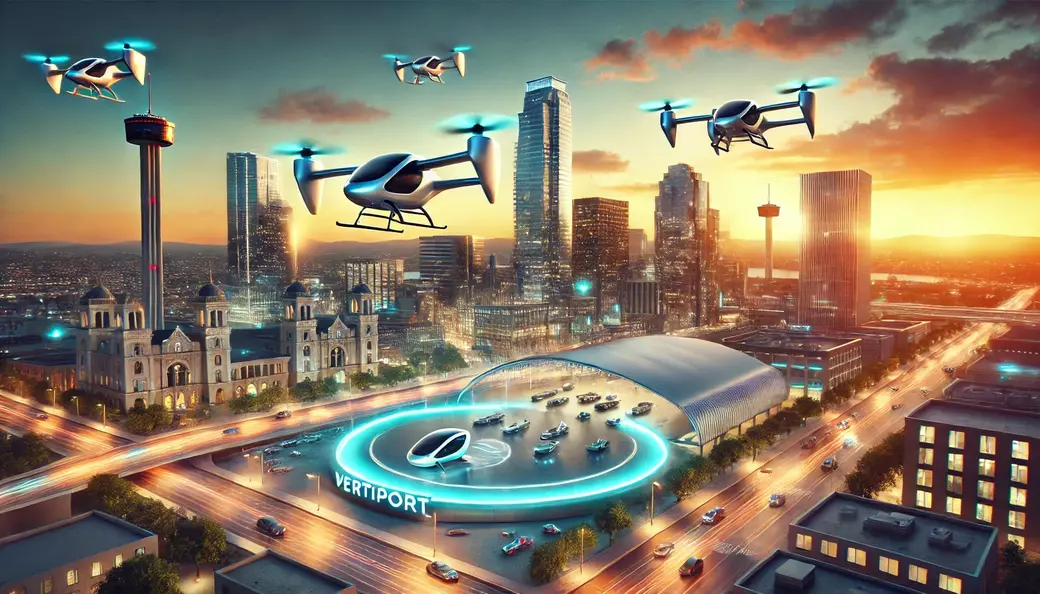San Antonio’s Future in the Skies: Port San Antonio Aims to Become an Air Taxi Hub

Imagine a future where flying cars are no longer just science fiction but a practical reality soaring above San Antonio’s skyline. That vision is closer than you think, thanks to Port San Antonio’s ambitious plans to become a hub for Advanced Air Mobility (AAM). The South Side tech campus is currently constructing a vertiport, laying the foundation for a network of electric vertical takeoff and landing vehicles (eVTOLs) that could revolutionize transportation across the region.
A Bold Vision for the Future
Jim Perschbach, CEO and President of Port San Antonio, has been working tirelessly to position the city as a leader in next-generation air transport. His goal? To have air taxis flying people and cargo across San Antonio within the next decade—cutting down commute times, reducing traffic congestion, and enhancing connectivity across the city.
The concept of eVTOLs is rapidly gaining traction within the aviation industry. These electric-powered aircraft take off and land vertically, eliminating the need for runways and making them ideal for urban environments. Initially, they will have pilots onboard, but the long-term vision is for autonomous flights, fully integrated into daily transportation systems.
Building the Infrastructure
To turn this vision into reality, Port San Antonio has already invested $13.6 million into the initial stages of site preparation and design for its vertiport. The total project is estimated at $102.5 million, with funding assistance expected from federal and state programs.
Unlike traditional aviation, which relies on large airports, Advanced Air Mobility envisions a more flexible “transportation web”, where small fleets of eVTOLs move people efficiently between various hubs. This could include:
- Morning commutes from suburban park-and-ride locations like Cibolo, Universal City, and Stone Oak.
- Medical transport between major hospitals, such as University Hospital and Port San Antonio.
- Special event shuttles for Spurs games, concerts, and shopping centers.
- University connections between Texas A&M San Antonio and Port San Antonio.
Regulatory Challenges and Safety Considerations
While the technology is advancing rapidly, regulatory frameworks still need to catch up. The Federal Aviation Administration (FAA) is actively working on certifications, airspace rules, and operational guidelines for eVTOLs and other autonomous aircraft.
“There’s a lot to be worked out with what Advanced Air Mobility is actually going to develop into,” said Perschbach. “We need to rethink airspace management, safety regulations, and public acceptance of pilotless aircraft.”
Despite these hurdles, industry leaders are optimistic. Major global transportation and aviation companies are investing heavily in eVTOL technology, signaling strong momentum:
- Lilium, a German aerospace company, plans to launch its eVTOLs in Texas by 2026.
- Toyota has partnered with Joby Aviation, investing nearly $900 million in developing electric air taxis.
- United Airlines is working with Archer Aviation to integrate eVTOLs into airport transportation.
San Antonio’s Role in Advanced Air Mobility
Port San Antonio is already making moves to secure its place as a key player in this emerging industry. The Port is applying to become an FAA-designated Advanced Air Mobility Test Site, which would position San Antonio at the forefront of national research and development efforts.
Senator Ted Cruz played a role in securing legislative support for a Center for Advanced Aviation Technologies, which must be established by October 2026. While San Antonio may not be the headquarters, it is highly likely to be chosen as a key testing location.
What’s Next?
Port San Antonio is not just waiting for the future to happen—it’s actively preparing for it. The vertiport’s construction is already underway, and testing of large drones (up to 500 pounds) is expected to begin soon. However, Perschbach has his sights set on the bigger prize—getting air taxis in the air.
“We want to prove that we can move people efficiently and safely using this technology,” he said. “San Antonio is uniquely positioned to be at the forefront of this revolution.”
As Advanced Air Mobility gains traction, San Antonio could soon become a model city for urban air travel, setting the stage for a future where flying cars are just another part of the daily commute.
Stay tuned for updates as Port San Antonio continues to push the boundaries of innovation, technology, and urban transportation.
Kristen Smith, realtor best San Antonio Realtor
Categories
Recent Posts











"Molly's job is to find and attract mastery-based agents to the office, protect the culture, and make sure everyone is happy! "
